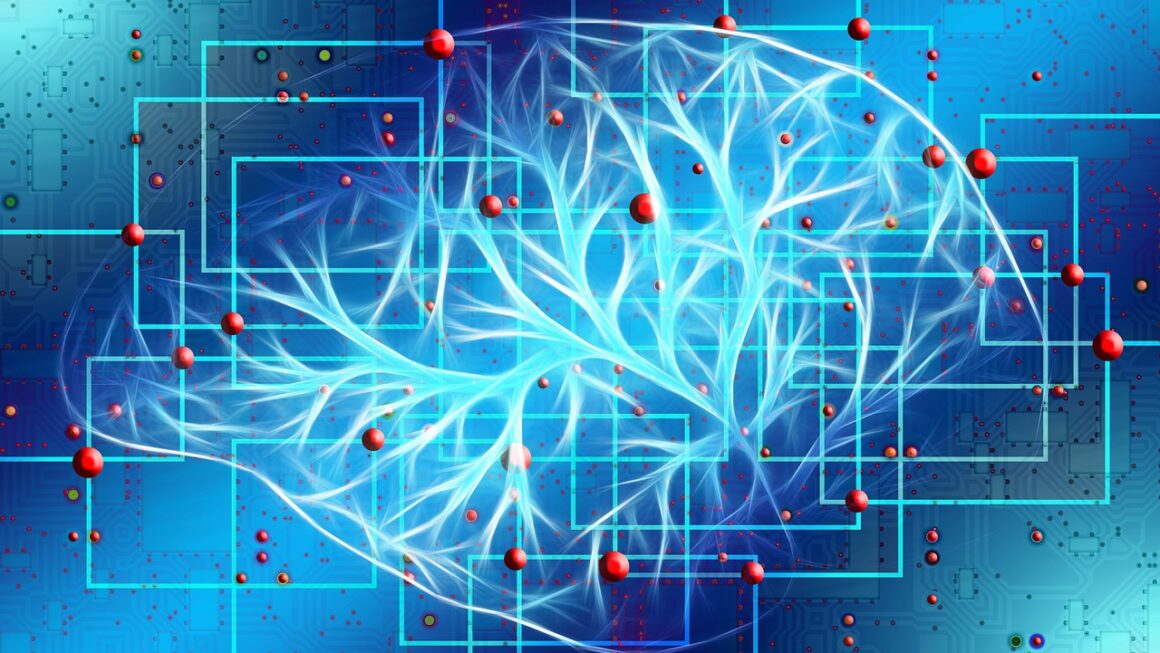The world is abuzz with Artificial Intelligence, and at the heart of this revolution lie AI models. These complex algorithms are transforming industries, shaping how we interact with technology, and even redefining what’s possible. Understanding these models, their capabilities, and their limitations is crucial for anyone wanting to navigate this rapidly evolving landscape. This comprehensive guide delves into the fascinating world of AI models, providing insights into their different types, applications, and the future they are forging.
Understanding AI Models
What are AI Models?
AI models are essentially computer programs designed to mimic human cognitive functions, such as learning, problem-solving, and decision-making. They’re built using algorithms and trained on vast amounts of data to recognize patterns, make predictions, and perform specific tasks. Think of them as highly specialized apprentices, learning from experience (the data) to master a skill.
- Key characteristics:
Learning from Data: The core principle is learning from data, not explicit programming for every scenario.
Pattern Recognition: They identify complex patterns and relationships within data.
Prediction and Decision-Making: They use these patterns to predict future outcomes or make informed decisions.
How AI Models Work: A Simplified Explanation
At their core, AI models use mathematical equations and statistical techniques to analyze data. The training process involves feeding the model with labeled data (where the desired output is known) and adjusting the model’s parameters until it can accurately predict the output for new, unseen data. This process is repeated many times, allowing the model to gradually improve its accuracy.
- Training Data: High-quality training data is critical for a model’s performance. Garbage in, garbage out!
- Algorithms: Different algorithms are suited for different tasks. Common examples include linear regression, decision trees, and neural networks.
- Model Evaluation: After training, the model is evaluated on a separate dataset to assess its performance and prevent overfitting (where the model performs well on the training data but poorly on new data).
Types of AI Models
AI models come in various forms, each designed for specific types of tasks and data. Understanding these different types is crucial for choosing the right model for a given problem.
Supervised Learning
Supervised learning models are trained on labeled data, meaning the input data is paired with the correct output. The model learns the relationship between the input and output and can then predict the output for new, unseen input data.
- Examples:
Image Classification: Identifying objects in images (e.g., cats vs. dogs). These models are used extensively in autonomous vehicles and medical imaging.
Spam Detection: Filtering out unwanted emails based on patterns in the content and sender information.
Credit Risk Assessment: Predicting the likelihood of a borrower defaulting on a loan based on their credit history.
Unsupervised Learning
Unsupervised learning models are trained on unlabeled data, meaning the input data is not paired with any specific output. The model’s goal is to discover patterns and relationships within the data, such as clustering similar data points or reducing the dimensionality of the data.
- Examples:
Customer Segmentation: Grouping customers based on their purchasing behavior and demographics. This enables targeted marketing campaigns.
Anomaly Detection: Identifying unusual patterns in data that may indicate fraud or system failures. Used heavily in cybersecurity.
Dimensionality Reduction: Reducing the number of variables in a dataset while preserving its essential information. Helpful for simplifying complex datasets.
Reinforcement Learning
Reinforcement learning models learn by interacting with an environment and receiving rewards or penalties for their actions. The model learns to maximize its cumulative reward over time, similar to how humans learn through trial and error.
- Examples:
Game Playing: Training AI agents to play games like chess or Go at a superhuman level.
Robotics: Developing robots that can learn to perform complex tasks, such as navigating a warehouse or assembling products.
Resource Management: Optimizing the allocation of resources, such as electricity or bandwidth, to minimize costs and maximize efficiency.
Real-World Applications of AI Models
AI models are revolutionizing various industries, impacting everything from healthcare to finance. Their ability to automate tasks, analyze data, and make predictions is driving innovation and creating new opportunities.
Healthcare
AI models are transforming healthcare by improving diagnosis, treatment, and patient care.
- Examples:
Medical Image Analysis: Detecting tumors and other abnormalities in medical images with higher accuracy than human radiologists.
Drug Discovery: Accelerating the process of identifying and developing new drugs by analyzing vast amounts of data.
Personalized Medicine: Tailoring treatment plans to individual patients based on their genetic makeup and medical history.
Finance
The finance industry is leveraging AI models for fraud detection, risk management, and personalized financial advice.
- Examples:
Fraud Detection: Identifying fraudulent transactions in real-time by analyzing patterns in transaction data.
Algorithmic Trading: Automating the process of buying and selling stocks based on predefined rules and market conditions.
Credit Scoring: Improving the accuracy of credit scoring models by incorporating alternative data sources and advanced machine learning techniques.
Retail
AI models are enhancing the customer experience, optimizing supply chains, and personalizing marketing campaigns in the retail industry.
- Examples:
Recommendation Systems: Suggesting products to customers based on their past purchases and browsing history. (e.g., Amazon’s product recommendations)
Inventory Management: Optimizing inventory levels to minimize costs and prevent stockouts.
Chatbots: Providing customer support and answering customer inquiries through automated chatbots.
Challenges and Considerations
While AI models offer immense potential, there are also significant challenges and considerations that must be addressed.
Data Bias
AI models are only as good as the data they are trained on. If the training data is biased, the model will also be biased, leading to unfair or discriminatory outcomes.
- Example: A facial recognition system trained primarily on images of white faces may perform poorly on faces of other races.
- Mitigation: Carefully curate and audit training data to ensure it is representative of the population the model will be used on.
Explainability and Transparency
Many AI models, particularly deep learning models, are “black boxes,” meaning it’s difficult to understand how they arrive at their decisions. This lack of explainability can be problematic in high-stakes situations where transparency is crucial.
- Example: A self-driving car making a life-or-death decision in an accident. Understanding why* the car chose that particular action is crucial for accountability.
- Mitigation: Develop techniques for explaining AI decisions, such as SHAP (SHapley Additive exPlanations) and LIME (Local Interpretable Model-agnostic Explanations).
Ethical Implications
AI models raise a number of ethical concerns, including job displacement, privacy violations, and the potential for misuse.
- Example: The use of AI-powered surveillance systems to track and monitor individuals.
- Mitigation: Develop ethical guidelines and regulations for the development and deployment of AI models.
Conclusion
AI models are rapidly transforming the world around us, offering unprecedented opportunities for innovation and progress. By understanding the different types of AI models, their applications, and the associated challenges, we can harness their power for good and build a future where AI benefits everyone. It’s crucial to remember that responsible development and deployment, including addressing biases and ensuring transparency, are essential to realize the full potential of these powerful technologies. The future is undoubtedly shaped by AI, and by understanding its models, we can actively participate in building that future.




